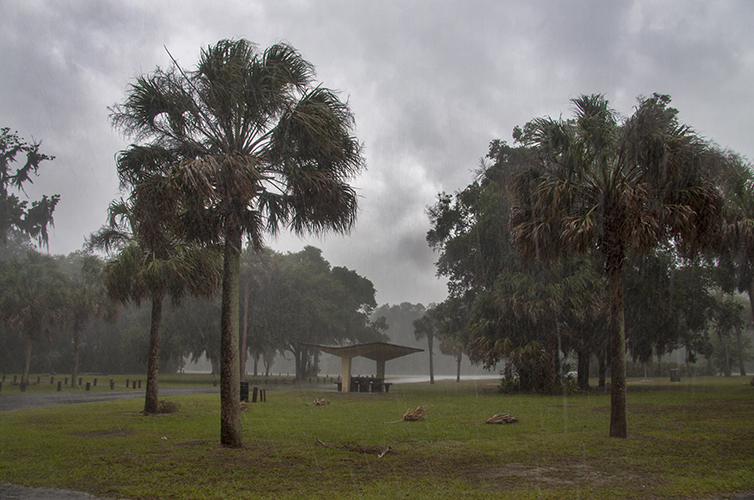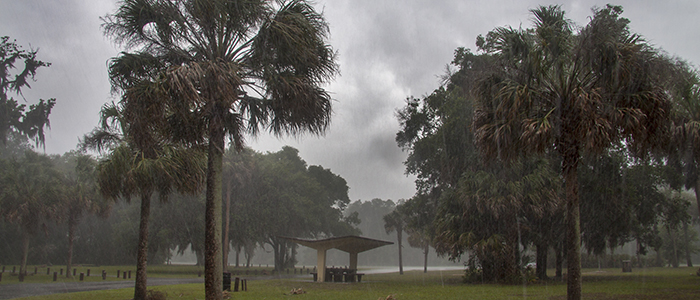Heavy Rain and Plant Damage

Florida-Friendly Landscaping™ in a Minute
Episode Archive
Episode #380 | Original Air Date: August 13, 2021
Related Resources
Transcript
Heavy rains can damage tender plants, wash away mulch, and erode soil from around plant roots.
Injured or dead plant parts should be pruned immediately after a storm to allow the plant to recover.
If the soil is really saturated after a heavy rain and you’re worried about root rot, help the soil dry out by removing the mulch from around plantings for a few weeks.
If your plants were damaged due to heavy rains, don’t apply extra fertilizer. It won’t help your plants recover any faster, and the next heavy rain will wash it right off and into the nearest water body.
Finally, remove any debris so that it won’t pose a threat during future storms.
Florida-Friendly Landscaping™ in a Minute is a production of the University of Florida’s Florida-Friendly Landscaping™ Program, IFAS Extension, and WUFT-FM in cooperation with the Florida Department of Environmental Protection.

